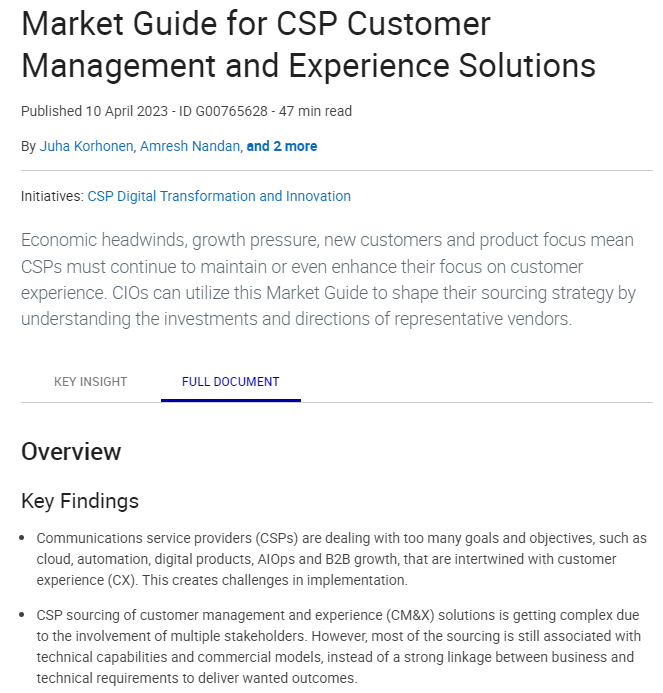Given that digital transformation is such an important focus for communications service providers (CSPs), it is surprising that no agreed definition of it exists within the telecommunications sector. If it were a new concept, it may be easier to define. But over the course of many years, CSPs have adopted the terms ‘digital’ and ‘transformation’ often independently of each other, with the executives who are leading transformation efforts typically using their own ideas and experiences to come up with a definition.
What is digital?
Telcos started using the term ‘digital’ around 2010. Telefónica’s launch of its Telefónica Digital division in 2011 motivated other CSPs to begin embracing the idea of digital services. But it was never clear precisely what a digital service was and was not.
- Was it something that could be delivered over the internet (in which case it represented an opportunity for CSPs to expand beyond their legacy networks)?
- Was the focus cloud-based services (public and private, B2C and B2B)?
- Or was it really just a new term for what had until then been called a value-added service?
In practice, a digital service contained elements of all three.
Telefónica opted to absorb Telefónica Digital back into the core business in 2014, but many CSPs continue to associate ‘digital’ with new services and revenue streams. For a more detailed discussion of what it means to be a digital service provider, see Section 2 and check out our two-part series on Inform.
What is transformation?

Anyone who has worked in the IT department of a CSP or has sold operational and business support systems (OSS/BSS) to telcos is familiar with the term ‘transformation’. CSPs have been attempting to transform their legacy IT systems for five to ten years or more, with limited success.
Transformation is necessary because legacy OSS/BSS that typically has been in place for decades, can’t cope with the rapidly increasing demand for new and complex services. Current systems exist in silos and are incapable of helping operators achieve their goal of delivering excellent customer experience regardless of channel.
But IT transformation has proven difficult because most CSPs can’t afford to simply rip out and replace all their old systems. As such, they try to work with suppliers to improve existing systems, but there is little incentive for suppliers when their revenue streams are at stake.
Digital transformation affects the entire business
It covers internal transformation initiatives aimed at increasing efficiency and agility through automation, and external initiatives where the focus is on improving customer experience, providing a digital omnichannel experience and delivering new digital services.
"Perhaps the biggest realization for CSPs since the early attempts to become digital is that without internal transformation they cannot successfully execute external transformation."
Network transformation as a catalyst
In 2011, concepts such as network functions virtualization (NFV) and software-defined networking (SDN) were new, but in the last five years the industry has embraced both. The question now is when, not if, CSPs will evolve their networks and infrastructures into a system that resembles cloud computing.
With both IT and networks embracing cloud, there is a strong case for merging IT and network functions.
This process is already underway, and our survey shows that a large number of transformation initiatives are being led by chief technology information officers (CTIOs), a relatively new role within CSPs created to make sure the company’s technology strategy serves its business strategy.
In some cases, network transformation is a trigger for wider digitalization within a CSP. This is because the true benefits of network virtualization can only be realized when OSS/BSS is modernized and if organizational culture, practices and software skillsets change with the network. For more about network transformation, see Section 6.
Measuring digital maturity
Digital maturity models have emerged to help organizations take a holistic approach to transformation. A wide variety of them exist, all designed to help organizations assess their readiness for transformation and set goals.

Forces organizations to analyze and properly structure the problems they need to address

Facilitates short- and long-term goals and plans

Helps organizations assess realistically where they are
TM Forum has developed a model specific to the telecommunications industry. The Digital Maturity Model (DMM) is split into five categories, or dimensions, representing critical areas of focus for the business:
- Customer
- Strategy
- Technology
- Operations
- Culture, People and Organization
Each dimension contains sub-dimensions, or business areas, where CSPs can drill down to assess digital maturity. The idea is for operators to score themselves for each of these dimensions and sub-dimensions and then based on their strategy decide how, when and where to deploy or redeploy budget and resources.
The key differentiator in the DMM is the focus on customers, strategy and culture. Indeed, TM Forum believes that the first step in any digital transformation is for the CSP to decide at a high level what it wants its business to be in the future. For more about this, see Section 2.
Watch TM Forum Chairman David Pleasance explain why it’s important to use a digital maturity model:
Digital Transformation Tracker survey
Over the past few years, many surveys have attempted to provide a snapshot of CSPs’ progress with digital transformation. While useful, they have focused specifically on digital transformation without looking at the broader picture of the state of CSPs' businesses. Furthermore, they only show a specific point in time, not trends across time.
TM Forum launched the Digital Transformation Tracker (DTT) initiative in May 2017 to provide a more complete picture of the state of global CSP transformation. The survey will run every six months, and many of the questions will remain unchanged from one survey to the next, allowing us to monitor progress and changes in perception around key drivers and success factors. We will also add a new set of questions for each survey to allow us to focus on a specific aspect of transformation. This first report, however, is about setting the scene, establishing the status of digital transformation today in the telecoms market.
In addition to questions directly relating to transformation, we are asking respondents about the future of their own businesses and the prospects for CSPs a whole. This context for digital transformation is essential if it is to be driven from the top of the organization.
We also are conducting a separate survey for suppliers, asking them a range of questions about how they view their customers’ transformation projects and goals. Vendors tend to have a more global view of transformation than individual (national) CSPs, and they have a vested interest in it because the products and services that they sell increasingly must be part of an overall transformation initiative. Furthermore, when it comes to questions about culture and organization within CSPs, they often can provide a more objective assessment.

Forces organizations to analyze and properly structure the problems they need to address

Facilitates short- and long-term goals and plans

Helps organizations assess realistically where they are

Helps organizations assess realistically where they are



















